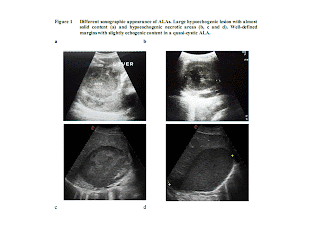Tổng số lượt xem trang
Thứ Tư, 1 tháng 5, 2013
Thứ Hai, 29 tháng 4, 2013
Diabetic Retinopathy in Southeast Asia: A Call for Ocular Telehealth Programs,
Diabetic Retinopathy
in Southeast Asia: A Call for Ocular Telehealth Programs, Paolo S. Silva,
et al, Vol. 27 No. 2 November 2012
Ocular Telemedicine Programs in Southeast
Asia
Nearly 15 years ago, the Diabcare-Asia 1998 Study Group
reported that more than half of the diabetes population in Asia
is not adequately controlled.36 Subsequently, Diabcare-Asia 2003 reported
that despite more effective and more
available diabetes therapies, the patient outcomes remain disappointing and suboptimal. Correspondingly, the prevalence of diabetic microvascular complications was
higher in the patients with poor control.
One of the first efforts for remote diabetic retinopathy
evaluation in Southeast Asia was
reported in 2000 by Ian Constable and colleagues from the Lions Eye Institute
in Australia .
Widespread community-based
examinations were performed using hand-held
portable fundus cameras in Rural Western Australia
and Surabaya , Indonesia Indonesia , Thailand , Singapore ,
Malaysia and the Philippines .
Although limited outcomes and sustainability data are available, given the
diversity in the Southeast Asian region, these programs are potentially
suited to address the emergence of diabetic retinal disease as the diabetic
population grows.
Figure 1. Retinal
images of patients with diabetes. (A) Retina
with no apparent diabetic retinopathy; (B) Severe traction retinal detachments; (C) Diabetic
macular edema; (D) Preretinal and vitreous hemorrhage. Images B, C and D depict the three primary
causes of visual loss due to diabetic retinal disease
Comprehensive Diabetes Care and Education
Although physician and
patient knowledge of diabetic retinal complications has increased
as a result of global informational campaigns, studies from Indonesia, Myanmar, Malaysia and Singapore have shown that patient
and physician awareness regarding
appropriate recommendations for care and
patient awareness of the presence of retinopathy are markedly inadequate.
Tajunisah and colleagues conducted a prospective survey to
assess patient knowledge on the appropriate recommendations for diabetes eye
care.
Over 43% of patients did not know how frequently they should
follow-up with their eye care provider and over 72% did not know
what eye
treatments were available. Over 80% of patients with diabetic
retinopathy identified on retinal imaging were unaware of their disease. Across Southeast Asia, approximately 50% to as high as 80% of patients do not receive the recommended eye care. Even in urban areas, eye care utilization among diabetes patients remains
low and it is estimated that less than 20% of patients receive the annual
recommended eye examination.
Although glycemic control and appropriate management of
co-existing medical conditions
remains the cornerstone of
diabetes care, patient education and
partnership with health care providers play an increasingly important role.
Education
regarding diabetic retinal
complications may ameliorate the
unawareness of both patients and health care providers. Addressing
the emergence of diabetic retinal complications through a
multidisciplinary approach that
includes the patient and health
care providers as partners in comprehensive diabetes care and education is
critical in preserving vision and reducing the risk of vision loss from diabetes. These educational strategies may be incorporated into telemedicine programs
that address both patient education and decision support for health care
providers. Retinal imaging provides the opportunity for universal application of evidence-based
diabetes eye care, focused, personal patient education, and coordination of diabetes care.
Call to Action
Given the rapidly growing diabetic population in Southeast Asia , over half of which is not achieving target glycemic goals, it is estimated that diabetic retinal
complications will dramatically
escalate and become the leading cause of
visual loss in these regions. Southeast Asian countries are
traditionally viewed as ethnically diverse and geographically dispersed. Identification and implementation of the
available strategies and initiatives that may be adopted in this setting to reduce the burden of
this emerging problem are greatly needed. Telemedicine efforts may provide a uniquely
suited means to unite these disparate
factors and enable the
establishment of national programs for diabetic retinopathy surveillance and treatment, with great promise to address this
critical emerging health issue in
this region of the world successfully.
______________________________________
B-Scan Ultrasound is a tool for eye disorders and diabetic retinopathy evaluation, Image from Medscape.
Đăng ký:
Nhận xét
(
Atom
)














